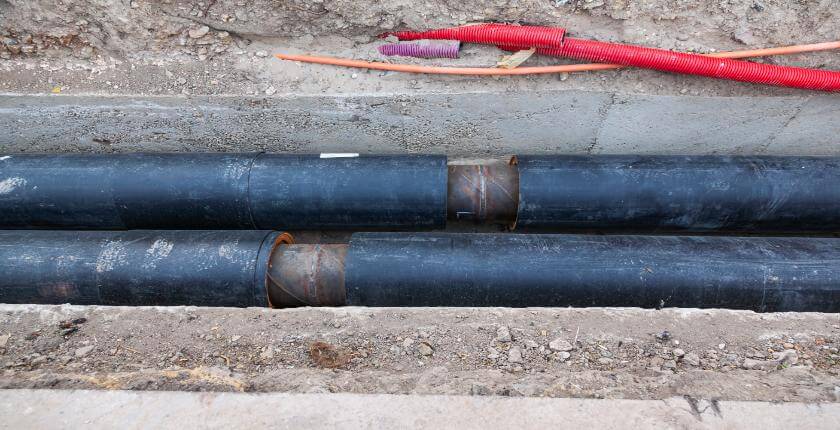
Patch Lining
Enquire Today For A Free No Obligation Quote
At Patch Lining, we provide advanced, no-dig repair solutions for fixing localised damage in drainage pipes and across the UK.
Our experienced engineers use cured-in-place pipe (CIPP) patch technology to target and restore damaged sections of pipe without the need for excavation, delivering durable, long-lasting results for both residential and commercial drainage systems.
We focus on precise diagnostics, seamless installation, and reliable performance, so your drains are repaired with minimal disruption and maximum efficiency.
How Does Patch Lining Repair Damaged Pipes?
Patch lining is used to restore structural strength, seal leaks, and improve flow in a specific section of pipe without disturbing the surrounding ground or structures.
Once installed, the patch liner bonds tightly to the host pipe, permanently sealing cracks, holes, and joint gaps in the affected area.
What Situations Require Patch Lining?
Patch lining is an effective method for repairing targeted drainage issues, including:
- Cracked or fractured pipe sections – Strengthening localised damage without replacing the entire pipe.
- Leaking joints – Creating a watertight seal at weak points.
- Root ingress damage – Sealing off points of entry and reinforcing the pipe wall.
- Corrosion or wear in isolated areas – Extending the service life of older systems.
- Minor collapses – Where the majority of the pipe remains intact.
- Flow restrictions – Removing internal defects that catch debris.
What’s the Cost of Patch Lining Across Area?
The cost of patch lining starts at £250 to £600 per patch, depending on pipe size, location, and condition.
Prices vary based on site accessibility, the amount of preparation work required, and the type of resin used.
Contact Patch Lining to get a customised quotation for professional localised no-dig pipe repairs at your property.
Can Patch Lining Be Carried Out for Both Residential and Commercial Properties?
Our patch lining is available for all types of properties, whether it’s repairing a single cracked section in a domestic waste pipe or sealing an isolated defect in a large commercial drainage run.
We have the tools and expertise to complete the work quickly and effectively in homes, retail units, factories, public buildings, and more.
Which Drain Problems Can Be Fixed Using No-Dig Patch Lining Methods?
No-dig patch lining is suitable for repairing localised cracks, leaks, displaced joints, root ingress damage, corrosion, and small collapses where the surrounding pipe remains in good condition.
It’s a cost-effective solution for clay, cast iron, concrete, or PVC pipes carrying both foul and surface water.
What Are the Signs You May Need Patch Lining?
You may require patch lining if you notice:
- Recurring leaks or damp spots in one area – Indicating damage to a specific section.
- Frequent blockages in the same location – Suggesting an internal defect is restricting flow.
- Visible root ingress at one joint – Roots penetrating a single entry point.
- Reduced flow in part of the system – Caused by a localised pipe deformation.
- CCTV survey evidence of isolated defects – Cracks, holes, or corrosion in one section of pipe.
How Do Drainage Contractors Install a Patch Liner?
The patch lining process begins with a CCTV survey to locate and assess the defect. The pipe is then cleaned with high-pressure water jetting to ensure proper adhesion.
A resin-impregnated liner patch is positioned over the damaged section using an inflatable packer, which is then expanded to press the patch firmly into place.
Once the resin cures—via heat, steam, or ambient methods, the packer is removed, leaving a smooth, strong, and watertight repair. A final CCTV inspection confirms success.
What’s the Difference Between Patch Lining and Full Pipe Lining?
Patch lining targets a small section of pipe, while full pipe lining repairs the entire length.
Patch lining is faster, less expensive, and ideal for localised defects, whereas full lining is used when there is widespread damage. We assess each case to recommend the most appropriate option.
Are All Drain Materials Suitable for Patch Lining?
Patch lining can be applied to most common drainage materials, including:
- Clay pipes – Often found in older properties and prone to joint leaks.
- Cast iron pipes – Strong but susceptible to corrosion in certain areas.
- PVC pipes – Resistant to corrosion but vulnerable to impact damage and cracking.
- Concrete pipes – Durable but can suffer from joint wear or isolated cracks.
Is Patch Lining a Permanent Solution for Localised Damage?
When installed by skilled contractors, patch lining provides a repair lifespan of up to 50 years.
It creates a smooth, joint-free finish that prevents further leaks or infiltration, resists root intrusion, and improves hydraulic flow in the repaired section.
Contact Patch Lining for a professional, no-dig repair solution for localised drainage defects.
Find More Info
Make sure you contact us today for a number of great patch lining services.
For more information on patch lining, fill in the contact form below to receive a free quote today.
★★★★★
“The patch lining repair was done quickly and efficiently. Our drain is now flowing perfectly with no further issues.”
Stephen Carter
Greater London
★★★★★
“Fantastic service! The patch lining solution saved us from replacing the whole pipe, saving both time and money.”
Linda Matthews
Greater London